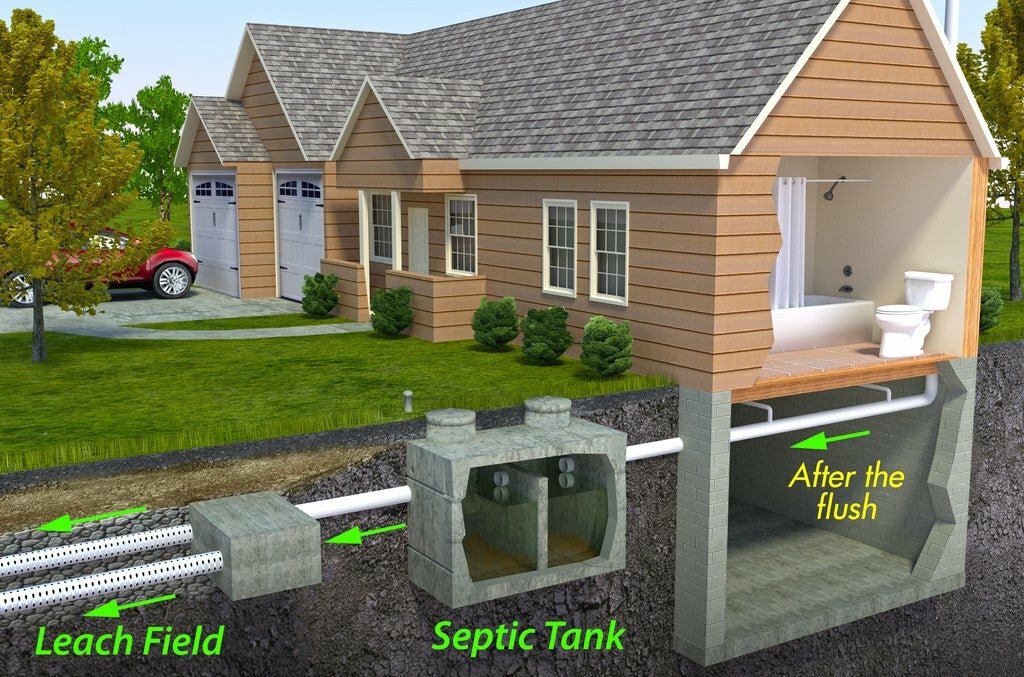For homes not connected to sewer lines, septic systems provide onsite wastewater treatment. But do all houses utilize septic tanks? This article explores what percentage of homes have septic tanks, reasons some don’t, and how to know if your house has one.
What is a Septic System?
A septic system treats and disposes of household wastewater when municipal sewer service is unavailable. The two main components are:
-
Septic tank – A buried, watertight container that settles solids and provides initial treatment.
-
Drain field – A leach field that filters wastewater discharge into the soil.
Microbes in the tank and soil provide treatment. Septic systems must be properly sited, installed, and maintained to work effectively.
What Percentage of Homes Have Septic Tanks?
It’s estimated that about 20-25% of homes in America rely on septic systems. This amounts to over 26 million septic systems in the U.S.
Rural areas are more likely to use septic tanks since sewer lines are not as accessible. For example, around 20% of new homes constructed in Texas have septic systems rather than connecting to municipal sewers.
Areas with lower housing density are generally more dependent on decentralized septic systems for wastewater management.
Do All New Homes Have Septic Systems?
All new homes do not necessarily have septic systems. Key factors that determine if a septic system is installed include:
-
Sewer availability – Homes can connect to municipal sewers if available nearby.
-
Lot size – Large rural lots better accommodate drain fields.
-
Soil suitability – Permeable soils that percolate are needed for the drain field.
-
Space constraints – Small suburban lots may lack space for a drain field.
-
Local regulations – Some jurisdictions mandate sewer connections if possible.
New urban and suburban homes are more likely to connect to sewers while rural houses often utilize septic tanks.
Reasons a Home Might Not Have a Septic Tank
While septic systems are common in rural areas, there are several reasons a home may not have its own septic tank:
-
Municipal sewer access – Homes can connect to public sewer lines instead of installing septic systems.
-
Soil conditions – Poor drainage, high groundwater, or shallow bedrock makes septic system installation challenging or impossible.
-
Small lot size – Not enough space for drain field installation.
-
Community systems – Shared septic tanks serving groups of homes in a development.
-
Alternative wastewater systems – Composting toilets or greywater systems.
-
Cesspools – Old homes may have outdated cesspools instead of modern septic tanks.
-
Sewer requirements – Local regulations prohibit septic systems in some areas.
How to Determine if Your House has a Septic Tank
If you’re unsure whether your home has its own septic system, there are a few ways to find out:
-
Check permit records for septic system installation and layout diagrams.
-
Inspect the property for signs like access covers, lush grass, or wet spots.
-
Trace plumbing lines from the home to see if they connect to a tank.
-
Ask neighbors if they know of a septic system on the property.
-
Hire a professional home inspector or septic contractor to assess the property.
Locating access lids and knowing your system type helps with proper maintenance.
How Do Septic Systems Work?
Understanding septic system operation helps maintain them:
-
Wastewater flows from home plumbing into the buried septic tank.
-
The tank settles solids to the bottom and separates scum at the top.
-
An outlet pipe directs clarified effluent to the drain field.
-
The drain field distributes effluent underground for further soil filtration.
-
Soil microbes provide final treatment before discharge into the ground.
Regular septic tank pumping and inspections ensure proper treatment levels.
Septic System Maintenance Tips
With proper care, septic systems can function for decades. Recommended maintenance includes:
-
Inspect annually and pump septic tanks every 3-5 years.
-
Use water efficiently and fix leaks to avoid overloading.
-
Don’t dispose of harsh chemicals or non-degradable items.
-
Divert stormwater runoff away from the drain field area.
-
Avoid excessive vehicle traffic or construction over system.
-
Keep detailed records of installation dates, locations, and past maintenance.
Proper maintenance extends the life of your system and protects home investment value.
Do All Houses Have Septic Tanks? The Bottom Line
While septic systems are a common wastewater solution, not every house has its own septic tank. Homes nearby sewer lines often connect to the municipal sewer. Soil conditions, small lots, and local regulations also factor into whether a property uses a septic system. Homeowners can check permit records, property signs, and plumbing lines to determine if their home has a septic tank. Understanding how these systems function helps homeowners maintain them for long-term, eco-friendly wastewater treatment.
